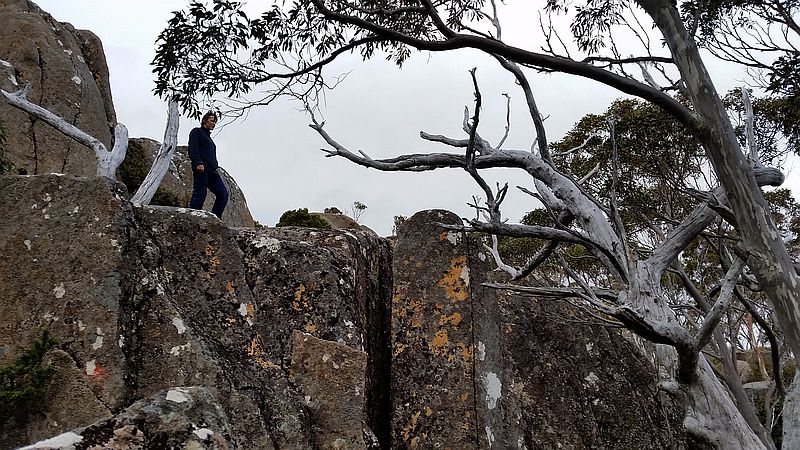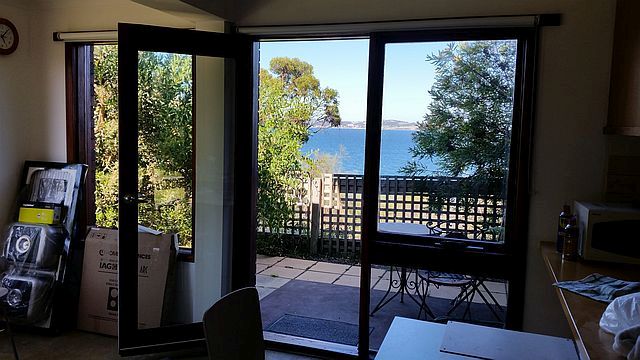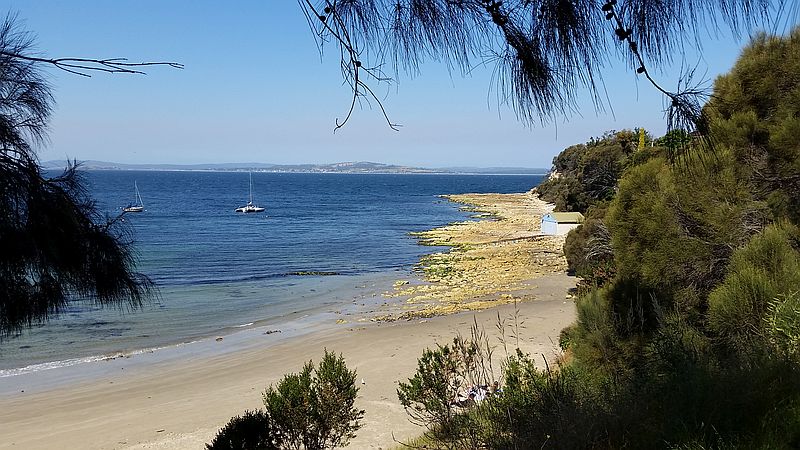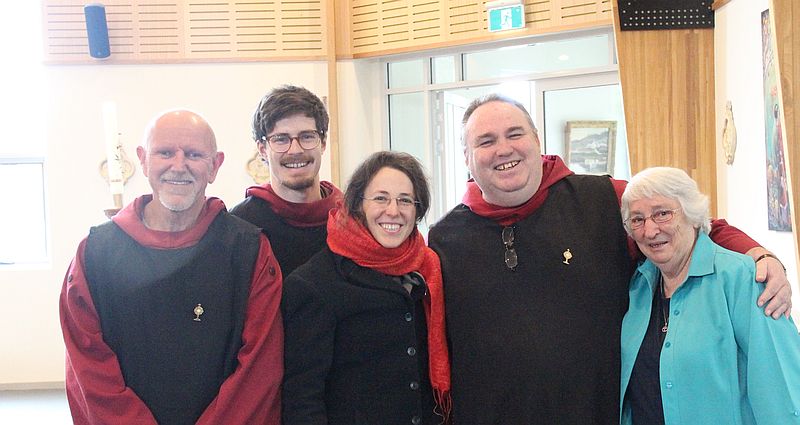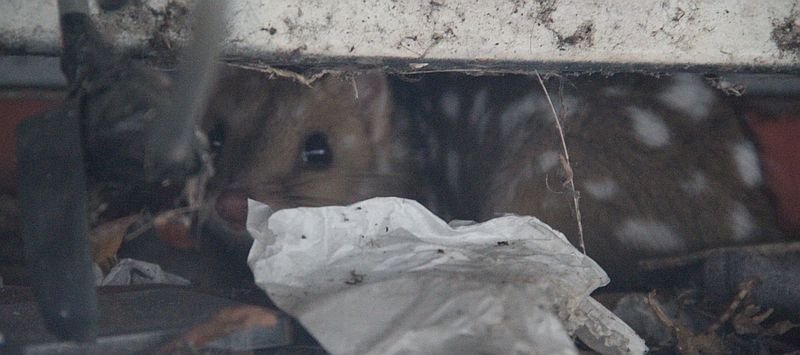|
Hobart December 2016 Ky (Brigitte) and I left Ocean Child at the marina in Yamba, and travelled to Hobart via bus and plane, arriving on November 5. We stopped at Jeannie's place overnight in Brisbane... wonderful company and food!
As shown in the Google Earth image, Hobart sits on the western shore of the Derwent Estuary. Mount Wellington (here marked as "Wellington Park" stands to the west of the city. Blackmans Bay is a 30-minute drive south of the city.
On November 6 my tenants vacated the Blackmans Bay house, and on December 11 my other set of tenants vacated the Blackmans Bay flat. This created some financial difficulties. I needed to find new tenants before I could return to Ocean Child. Ky arranged work picking strawberries in the Huon Valley, south of Hobart. I concentrated on cleaning and painting the house and flat, to make them attractive for prospective tenants. Before leaving for her strawberry job, Ky took an interest in the house and flat, and was a great help in working out a renovation program.
I always take my out-of-town guests to the top of Mount Wellington. The suburbs of Hobart extend from the Derwent Estuary to the foothills of the mountain, which rises more than 1000 m above the city. The photo above was taken from The Domain, not far from the Estuary, looking west to the mountain. The views from the summit (easily accessible by car) are spectacular, although the weather at that altitude is usually cold and windy.
Ky and I arrived at the summit shortly before sunset. It was, as I expected, windy and freezing cold. After parking we (big mistake) opened both doors of the car at the same time: the fierce wind, having both an entry and an exit, swept away our map, never to be seen again.
The sun set in the west, as it usually does....
Above... Ky's photo... un-retouched... this is what we saw...
Looking towards the north...
Above... after sunset we were left with the soft light of evening... my Samsung phone does a great job, without a tripod. Here is what it saw in the fading light, looking south-east towards Bruny Island.
The next day we paid a visit to Lost World, a boulder-field on the north-east corner of Mount Wellington.
The rocky floor of Lost World must have been created by an earthquake a long time ago, perhaps millions of years? Many of the dolorite boulders have straight flat sides. As they fell, they created many 'caves', two of which are large enough to attract exploration by tourists such as ourselves. The aerials you can see in the distance are TV and telecommunications towers.
The entrance to the northern cave. A local scout group marked this cave with an arrow painted with red paint... perhaps a little overdone, but the years have taken some of the gloss, thankfully, off the arrow.
The sun came out at last, bringing to life the eucalypt woodland colours, so typical of southern Australian forests. The dead trees are monuments to the terrible bushfires of 1967, which destroyed many Hobart suburbs, and cost more than fifty lives.
Lichens cover most of the rocks with intricate and beautiful patterns...
How many places can you step straight from a path into the TOP of a tree? Click here to see what happened when Ky took that step...
The Blackmans Bay house, being empty, provided us with a convenient base. Here is sunrise, viewed from a bedroom window. The view is of the southern-most part of the Derwent River estuary, looking towards South Arm and Opossum Bay.
Above: the layout of the small apartment (the flat) underneath the house. As you can see the layout is unusual, resulting in only one room being "private". So technically, it is a one bedroom apartment.
Above, the view from the aparment's back door. The photo was taken in the afternoon, in the morning the sun comes right into the room of course, with it's easterly aspect.
A short stroll took us to the southern end of Blackmans Bay beach...
And it's tidal rocks. Note the growth of the algae called here "sea lettuce" which is usually an indicator of elevated nutrient levels. There was almost none of this algae here a few years ago.
Later we drove to the Huon Valley, an important farming region lying south of Hobart. This (above) is typical of the landscapes in this area.
Ky found friends immediately amongst the local Catholic community.
Tasmania's quolls have a reputation as shy and cryptic: however here (above) is a photo Ky took in broad daylight of a quoll hiding amongst rubbish. She was lucky to get this shot; I have lived in Tasmania now for 17 years, and only caught a fleeting glimpse of this animal once, and that was at night.
After Ky returned from her work in the Huon Valley, we visited Maria Island before she left Tasmania for Perth (Western Australia) on December 26, 2016.
|











